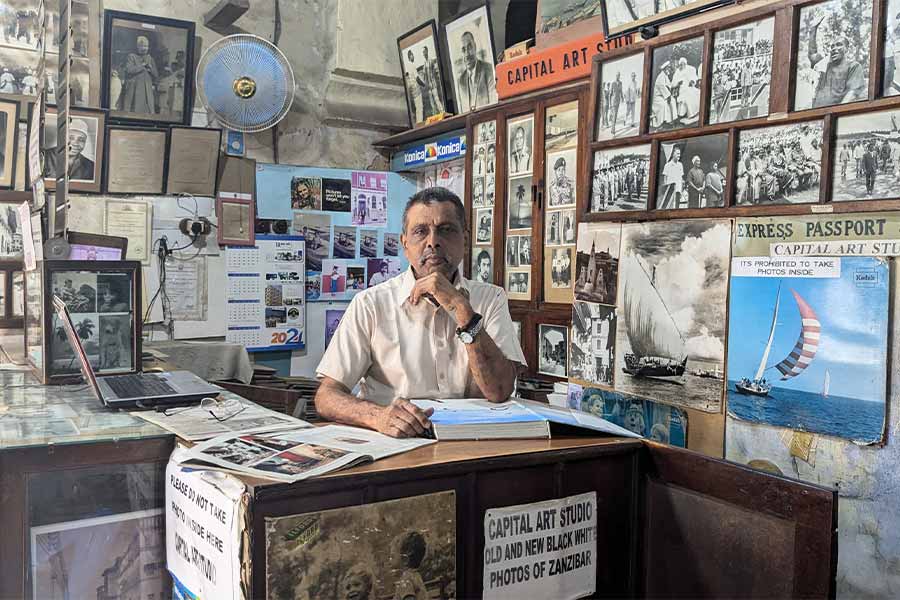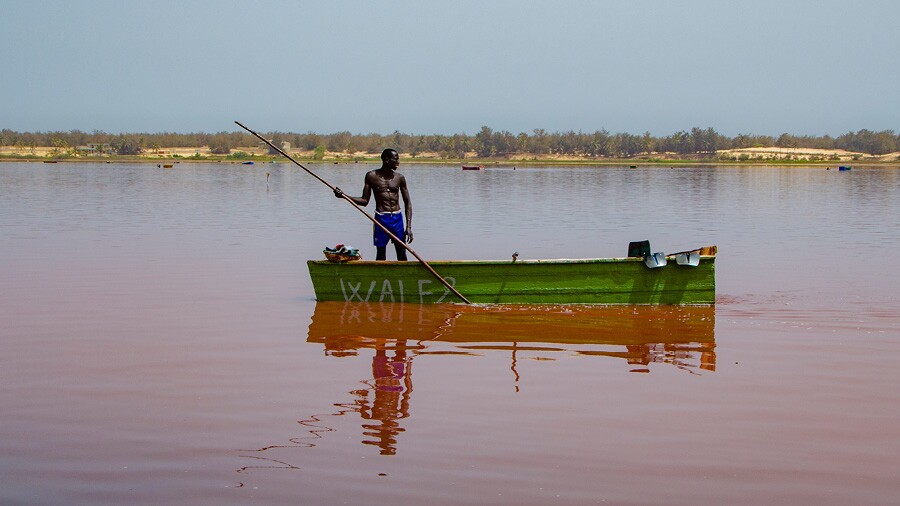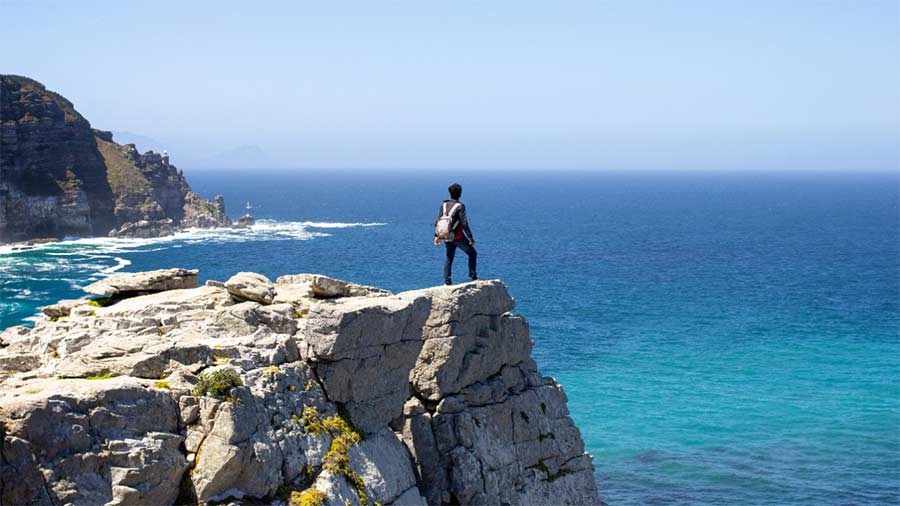It’s a regular tourist weekend in Stone Town, Zanzibar. The narrow streets of this East African island getaway are alive with sun-kissed vacationers, their freshly braided hair mirroring the winding alleys. Colourful kitenge (or chitenge) fabric accessories adorn the entrances of wayside stalls on Shangani Street, popping in contrast against the white-washed houses.
I shuffle past a group of European holidayers and casually glance across the street. There is an elderly gentleman in a cream half-shirt and black trousers standing outside an ornately carved arched hardwood door. He looks Indian; his grey moustache drooping like the dried mango leaves strung across the doorway. I look at a banner behind him and it says ‘Capital Art Studio’.

Rohit Oza carries on a legacy started by his father in the 1930s Karo Christine Kumar
There is something about the name that stirs my memory, and a photograph of Freddie Mercury flashes across my mind from a visit the day before. At the museum dedicated to Queen’s lead vocalist and pianist, just down the road from this spot, there is a photograph of Freddie as a baby.
Born Farrokh Bulsara, he spent his first eight years in Zanzibar. His father, Bomi Bulsara, originally from Bulsar in Gujarat, had relocated to Zanzibar for his job as a cashier in the British government’s High Court. The family, who were Parsi, later moved to Panchgani in Maharashtra, though Mercury returned briefly to Zanzibar as a 16 year old, in 1962. The museum caption reads: “One-year-old Farrokh’s first public appearance. The photograph was taken by a local photographer at the Capital Art Studio located at Shangani Street, Stone Town. The photographer had displayed the picture in his shop window, which then won a prize.”
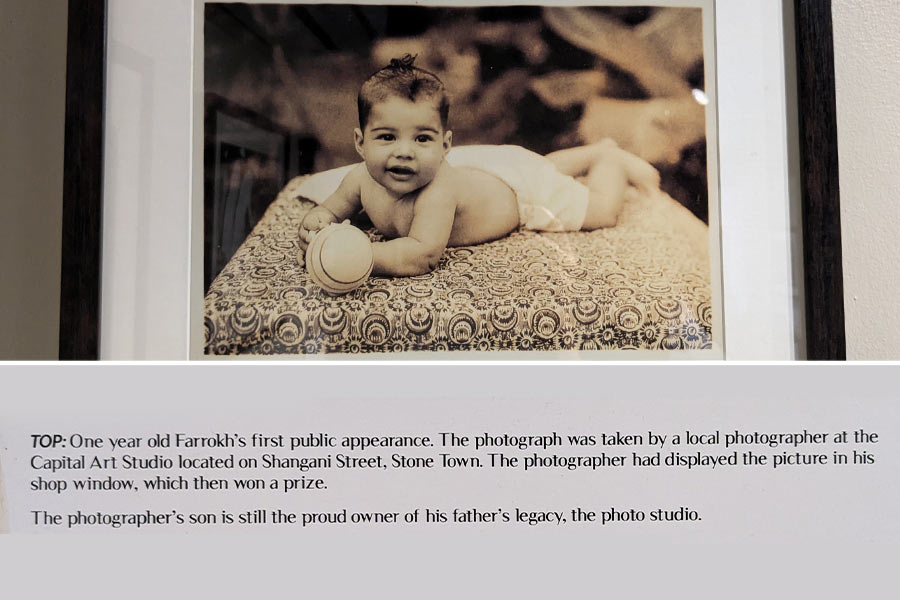
Ranchod T. Oza, who arrived from native Gujarat, opened Capital Art Studio in Stone Town, Zanzibar in 1930. He clicked this iconic photograph of Freddie Mercury as a baby, discovered several decades later, which is now framed in The Freddie Mercury Museum Karo Christine Kumar
The gentleman looks at me quizzingly as I smile at him and enter his shop. I learn his name is Rohit Oza. He speaks “thoda-thoda” (little) Hindi, but is fluent in Gujarati. I ask him about the photograph in the museum and his eyes immediately light up. “Ah yes, that was clicked by father Ranchod Oza,” says the proud Gujarati. “At the time, nobody knew how famous this child would become.”
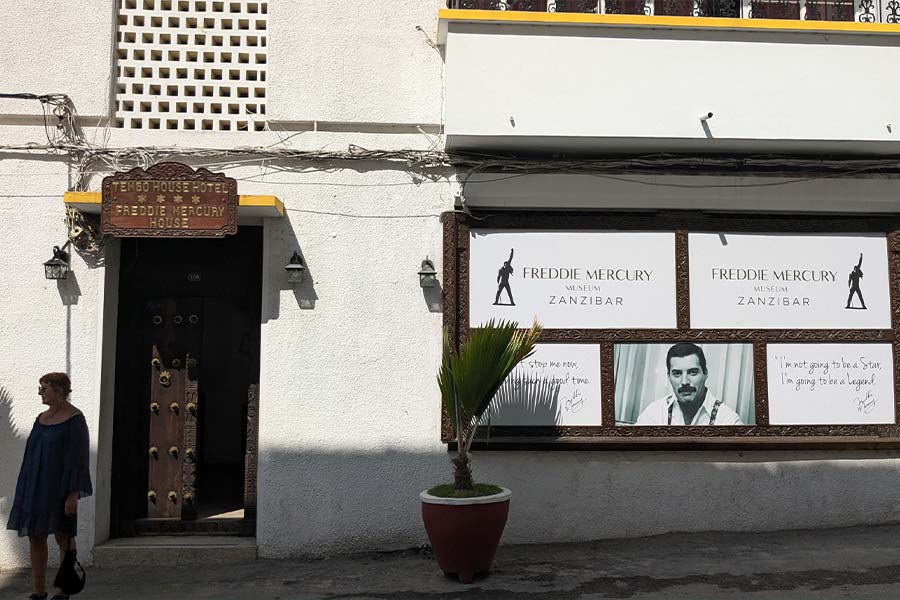
The Freddie Mercury Museum in Stone Town Karo Christine Kumar
Years later, how did they discover it was Freddie Mercury? “A gentleman visited our store and saw a photograph of Freddie as a child clicked with his mother Jer Bulsara. He recognised Jer. Then we looked for more photographs of Freddie and found three. Today, two are framed in the Freddie Mercury museum,” says the man who has also featured in a documentary about the musician.
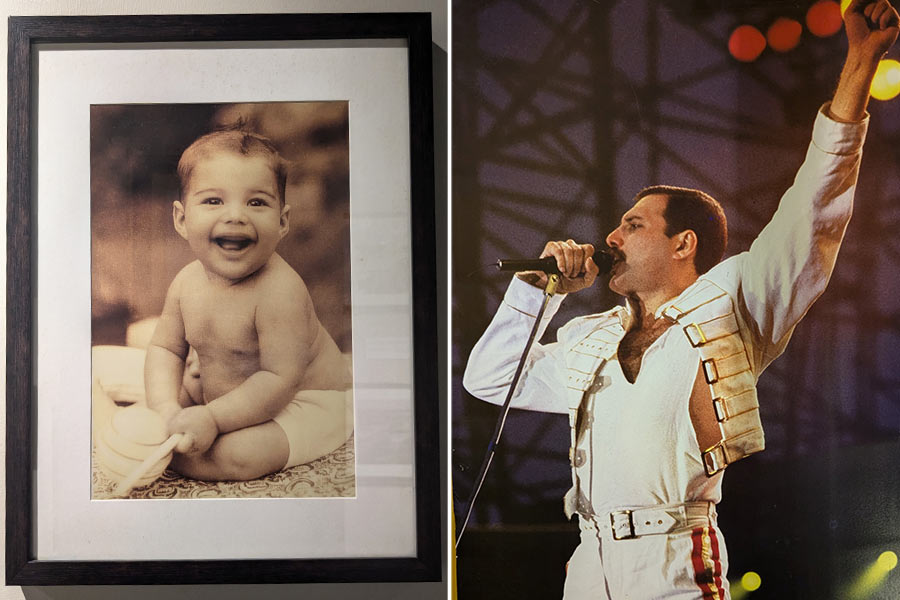
Freddie Mercury at one, and (right) the rockstar known for his stage presence and outlandish costumes, as chronicled in The Freddie Mercury Museum in Stone Town, Zanzibar Karo Christine Kumar
Ranchod Oza arrived in Zanzibar from his native Gujarat in 1925, after a 30-day trip by dhow, driven by dreams of independence and fortune. “His path crossed with Mr. Gomes, an Indian from Goa and the first photographer to open a studio in Zanzibar (and in East Africa) in 1868. This chance meeting marked the beginning of a remarkable journey,” shares his son Rohit. With no prior experience, Ranchod threw himself into the art of photography, working as an assistant. By 1930, his passion and hard work paid off as he opened Capital Art Studio — the second studio on the island and still in operation today, on the most prominent street in Stone Town. His work soon caught the eye of Sultan Khalifa, who ruled Zanzibar from 1911-1960, and he went on to become the semi-official royal photographer.
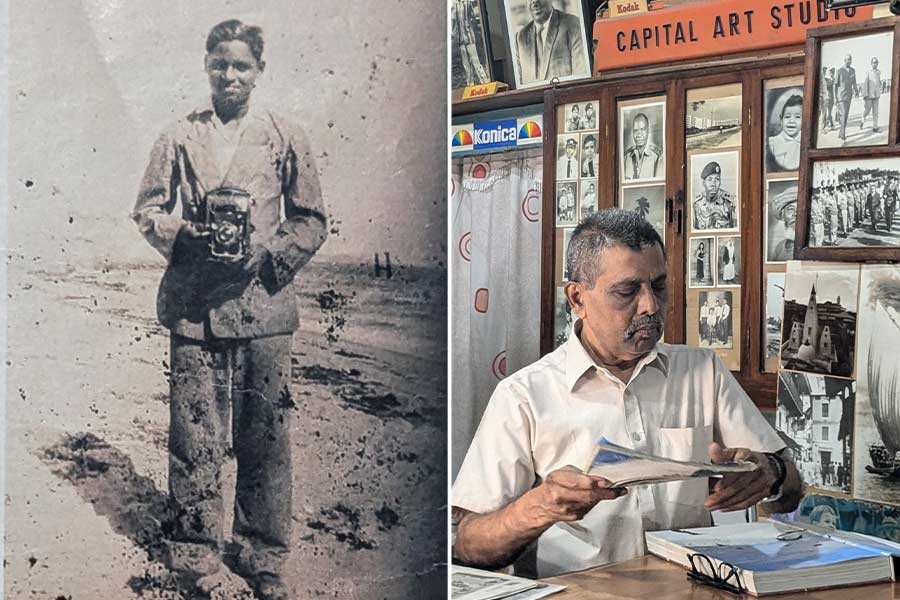
Caption: Ranchod T. Oza with his camera, soon after his arrival from Gujarat in 1925, and (right) Rohit shows off a French magazine that has an article on his legacy Courtesy Capital Art Studio, Karo Christine Kumar
Inside Capital Art Studio, time seems to stand still. The walls, from ceiling to floor, are framed with black-and-white photographs of politicians and important figures like Queen Elizabeth, the former emperor of Ethiopia Haile Selassie, Indira Gandhi, Joseph Kabila, Abdul Kalam during his 2004 visit to Zanzibar, and the revolutionaries of the island. “In the 1930s, there were many famous Indian businessmen in Zanzibar, most of whom left the country during the revolution of 1964,” says Oza.
At Capital Studio, dates of historical significance have been chronicled, as have the streets and architecture of Zanzibar, including the iconic House of Wonders (also known as Palace of Wonders) before a section of it collapsed in 2020. The entire essence of Zanzibar is preserved here — the island’s labyrinth of shaded alleys, its mixed urban planning with powerful charm, its silhouettes from the 1930s and 1940s, its unchanging dhows with splendid lateen sails and sharp bows, invented by a few brilliant sailors to be able to navigate the tricky wind corridors of the Indian Ocean.
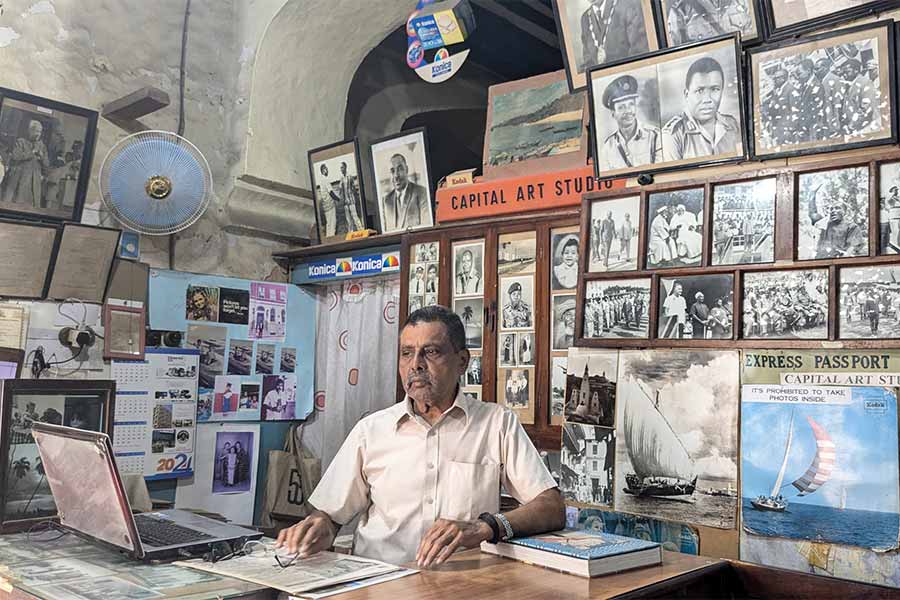
Inside Capital Art Studio, time seems to stand still
As a young man, Rohit joined his father on photography trips through the streets and coastlines of the African island of Zanzibar. He joined the business in 1989. Now almost 70, he is walking in his father’s footsteps, running the photography shop. “I enjoy clicking official events, portraits, architecture, the streets, everything… just like my father,” he says. His orders are numerous, those from official bodies, but also those from the public, tempted by his studio portraits and shots of private parties. “Alongside my father's photographs, I display my own images of the same location today.”
The story goes that just 10 days before Freddie Mercury passed away, Queen’s manager Jim Beach met with him to discuss how his legacy should be handled. Freddie’s response was simple: “You can do whatever you like with my image, my music… just never make me boring.”
A sentiment the Oza family lives by too — a piece of India thriving in a historical port city in Zanzibar.
